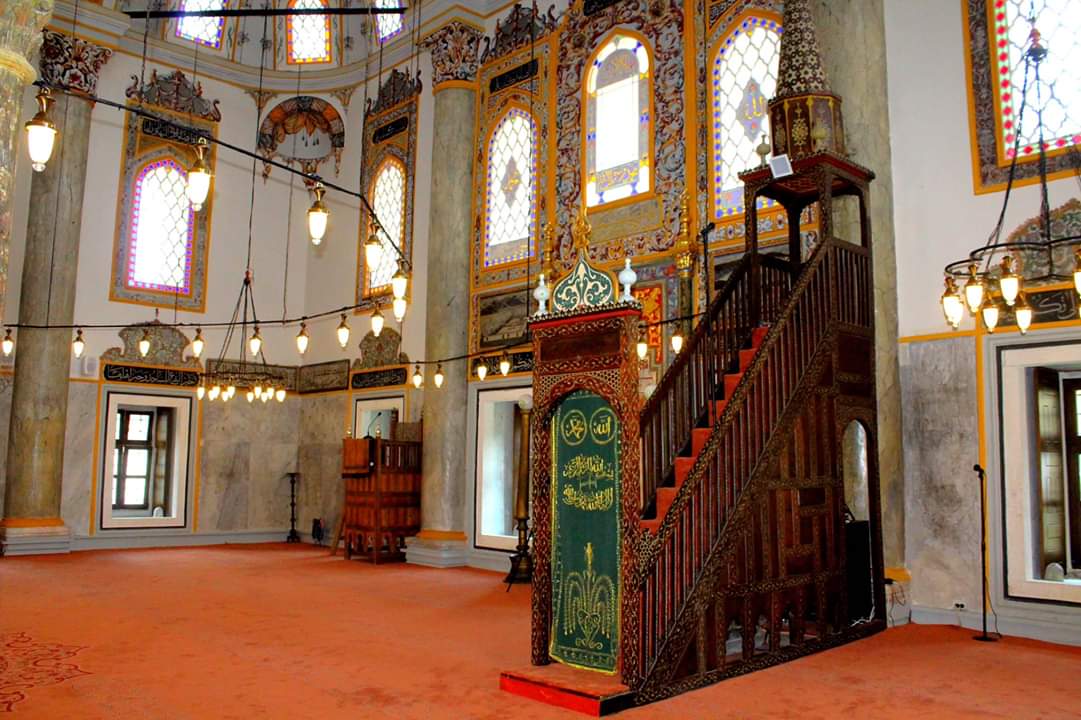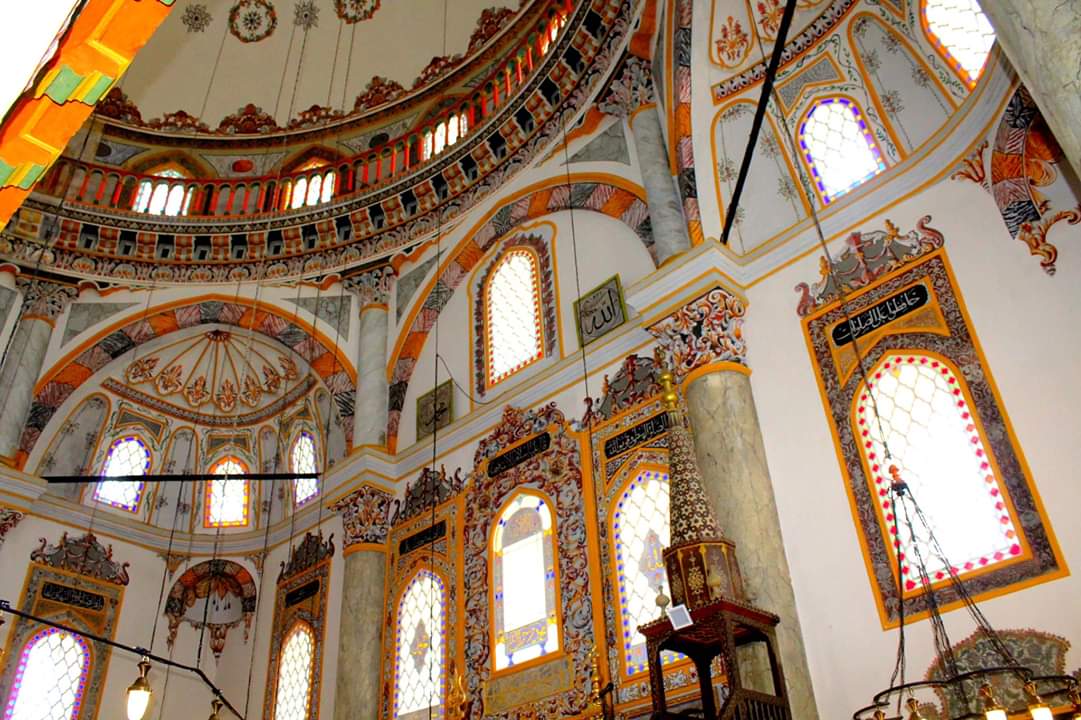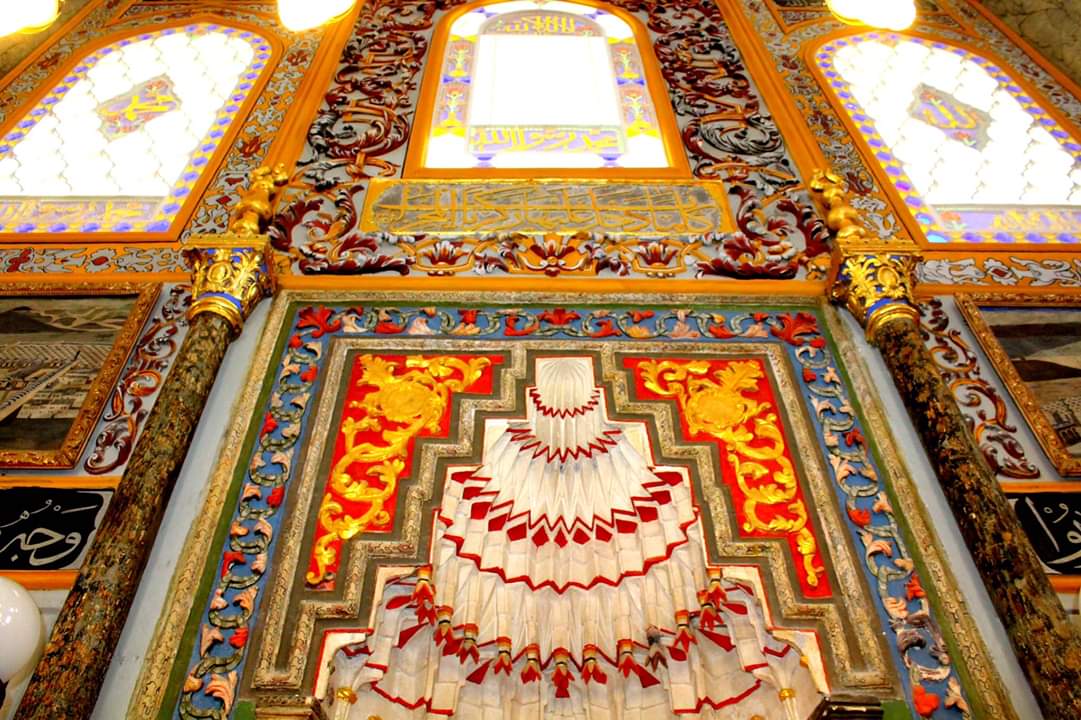
About the architectural pearl “Sherif Halil Pasha” mosque and its several-years of restoration

“Sherif Halil Pasha” mosque is the largest Muslim temple in the country among the mosques remained from the Ottoman period. It is considered to be the second largest from the same period also on the entire Balkan Peninsula – after “Selimiye” mosque in Edirne, Turkey.
Started in 1740, the construction of the famous and known also as “Tombul” mosque in the city of Shumen was finally completed four years later, in 1744 (or in 1157 Hijri year according to the memorial plate located above the central entrance of the temple).
The Muslim temple was constructed with donations of Sherif Halil Pasha from the village of Madara, Shumen region, and the historical mosque bearshis name even today. He was an influential at that time military and administrative figure with a special affinity to architecture, science and art. During that time the generous benefactor worked at the state administration, located in the central then part of the city of Shumen and maybe in this way was selected the location of the newly constructed temple – in the city center at that time. Due to the significant enlargement of the city afterwards, however, the located in the past at the center mosque today remains in the south-western part of Shumen.
Sheriff Halil pasha died in 1752, several years after the completion of the construction works for building “Tombul” mosque.
If we have to look more closely to the architecture of the entire complex “Tombul” mosque, we could say that traditionally for that time at the mosques were constructed also supplementary outbuildings with a public function. At the left side was the makteb, a primary school”, specialized for calligraphers, and at the right side – the madrasah – secondary and higher school, where religious and secular studies were taught. There is also a library at the complex, in which at that time were kept 5000 volumes in Arabic, Persian and Ottoman languages. The name of the mosque “Tombul” is related to its domed roof because for the period of its construction this was the only one with such a roof.
The minaret of “Sherif Halil pasha” mosque is 40 meters high and it has one external balcony. There are 99 internal stone steps with spiral arrangement that lead to the top of the minaret.
The interior of the Muslim temple is no less impressive than its exterior. The prayer hall is for men and the balcony is for women. The lower part of the large hall has the shape of octagon in its basics and in its upper part – in the shape of circle, ending with the rounded domed roof. The distance between the floor and the dome id 25 meters. The prayer hall inside is full of colorful floral ornaments, Makkah paintings and other beautiful elements.
It is an indisputable fact that we would not have been able to witness nowadays all those exquisite architectural works in the historical mosque “Sherif Halil pasha” if a significant care was not taken for them over all those years.
In August 2019 the restoration of the internal part of the Muslim temple was finally completed.
The restoration of “Tombul” mosque started back in 2004 with initial studies and overburdens. Surveys and studies were done, related to the condition of the murals. From all accessible places are made overburdens in order to have a complete vision for the general condition of the interior of the Muslim temple. Unfortunately, due to the lack of funding over the years the works had to be interrupted. So it was initiated again in 2016 and in August 2019 the restoration of the interior part of “Tombul” mosque was finally completed. The remarkable achievement of the working at the site restorers and of the local Regional Mufti’s Office, who have been working over the years together in an exceptional understanding and harmony, is that during the period of its restoration the mosque has never been closed for the acts of worship of the local Muslims. During the entire period of the works no prayer was canceled.
According to Lyubomir Vodenicharov from “EVROREST 2002“Ltd., who is in charge of the restoration of the historical mosque in Shumen, for the company this is the largest in volume and significance complexly resorted site.
During the working process the team of the restorers discovered a number of interesting findings, erased from the traces of time themselves and from the numerous attempts for repair through applying layers of paint and coating with lime over the murals. Among them are the exquisitely painted wooden ceilings – very colorful and finely crafted. It is interesting the fact that the mural decoration of the interior of the temple is on an area of nearly 2 daa. Particularly noticeable are also the handrail of the by-pass gallery, which is richly-hued, as well as the original borders around the windows.
The restoration of the art decoration of “Tombul” mosque appeared to be not an easy challenge over the years. For that purpose, all later applied non-original layers, that hid a large part of the exquisitely carved before that woodworks and decoration, had to be removed.
The architectural and construction restoration of the temple includes also an entire restoration of the roof construction, making ceiling shuttering with new sheet metal, changing the main water pipe, sanitation and electrical installation. According to the head of the art restoration Lyubomir Vodenicharov, one of the difficult moments for the specialists in the process of restoration was related to the fact that there are two periods of art decoration in the temple. The first is the original, from the middle of 18th century, and later on are introduced Baroque elements.
“The greatest challenge was the exposure – how to be ethic to both the periods.” – commented for Grandmufti.bg the expert in the art restoration Vodenicharov. According to him at several places in the area with murals deliberately are left small non-restored pieces to remind about the period before the restoration.
Due to the large scale of the site and its heights, within the restoration which continued several years not an easy task was also the very access to each of the places. For this purpose, a very complex scaffolding was used, through which to provide access to every place. The work on the 40-meter minaret is relates to its structural strengthening through special modern restoration methods.
Since, in principle, the restoration does not allow the introduction of materials which were not been used in the initial construction of a site, in the restoration of “Tombul” mosque were also used the materials used in the construction of the temple. The art decoration of the interior is handmade and for this purpose during its restoration were sought the same or similar to the original materials, used at that time – plant based paints or close and similar to them.
It is expected that during the present year, 2020, the restoration works on the entire complex of “Sherif Halil pasha” mosque will be officially completed, including besides the prayer section also the outbuildings, the fountain, the madrasah and the place where the headquarters of Regional Mufti’s Office – Shumen is located today.
The historical Muslim temple “Sherif Halil pasha” in the city of Shumen is classified as a cultural monument of national importance and is one of the 100 national tourist sites of Bulgaria, that are daily open for tourist visits.
Author: L. Chausheva




© Muslim Denomination. All rights reserved.